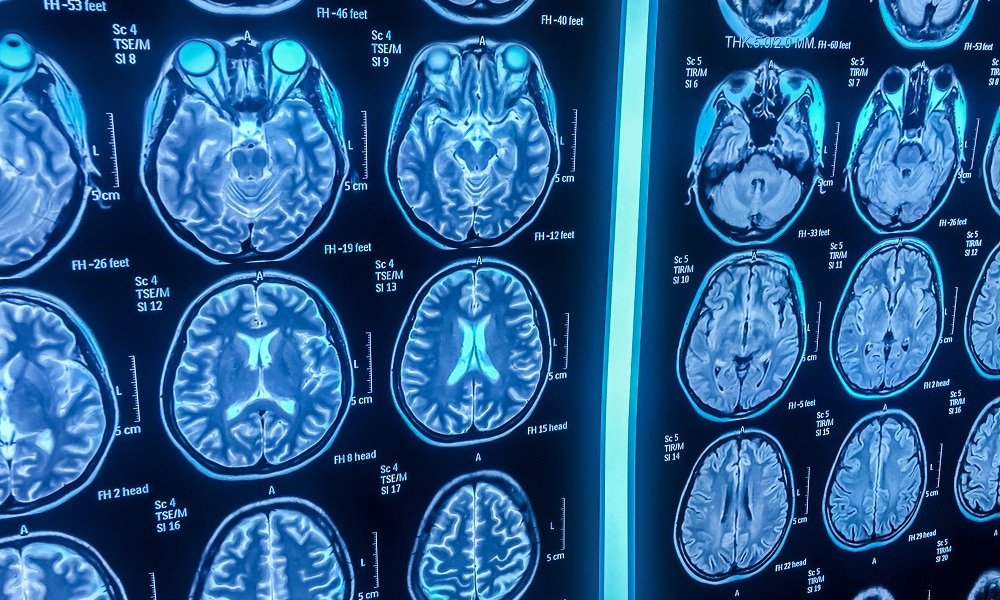This podcast series from Teacher magazine is supported by SSO – Subject Selection Online. One easy platform for your subject selections. Let SSO handle the checks and challenges for you; extracting pristine data to upload into your timetabling software. Try SSO today at subjectselectiononline.com.au
Hello and thank you for downloading this podcast from Teacher magazine – I'm Jo Earp. When we ask readers and listeners about the professional learning topics that interest them and what they'd like more support on, teacher wellbeing is always right up there. I'm here today at the University of Queensland in Brisbane to find out about a teacher wellbeing study, looking at the impact of two stress interventions.
Jo Earp: Two of the research team, lead researcher Professor Annemaree Carroll and Dr Julie Bower, have joined me to share their findings. So, we'll start with you first Annemaree. What was the aim of the research first of all?
Annemaree Carroll: Our Wellbeing Teaching and Learning Project is one of many research projects that we have going at the moment as part of our special research initiative, Australian Research Council Science of Learning Research Centre (SLRC). The centre was established in 2013 and it brings together 25 of Australia's researchers across the disciplines of psychology, education and neuroscience. And so it's been a really unique opportunity to do research that perhaps we hadn't been able to do in the past.
The project that we've been conducting sits under the major theme of Promoting Learning. What we've been wanting to do is to understand the crucial role that emotion regulation plays in terms of teacher stress and wellbeing. So, within the project, we've conducted two major studies over the past two years. The first is our Teacher Stress Study, and in this study we conducted a very large web-based survey to develop a greater understanding of the occupational stress, burnout, the emotion regulation and the wellbeing in our Australian teachers.
And then in our second study, which is our Wellbeing Teaching and Learning Study, what we wanted to do here is to actually evaluate the benefits of interventions that would reduce stress and actually improve the emotion regulation and wellbeing in teachers. And another thing that we were very keen on also is to look at the downstream benefits of these teacher stress reduction programs on the students of those teachers.
JE: So, it's quite a complex project. Like you say, there's been a stress survey as well before that. So, who did it involve? We'll focus on the intervention study, this was school teachers wasn't it?
AC: It was, yes. In our Wellbeing Teaching and Learning Study we recruited 83 teachers to the program. They were interested, from the outset, in being involved in an intervention. So, we put out a call through our Science of Learning Research Centre network, through emails to school principals, on whether the teachers would be keen to come along to do an eight week intervention with us.
So, it was quite detailed; and all of the participants were either primary or high school teachers, and they were experiencing stress in their jobs. That was one of the things that we wanted, that they would acknowledge that there was some kind of feeling of stress in the work that they were doing. However, there were quite stringent criteria – so, they weren't on any antidepressants and they weren't doing any regular meditation or exercise at the time, they were in good physical health and also good psychological health. One other thing, they had to be willing to undertake an MRI [Magnetic Resonance Imaging] for the study.
JE: That's quite interesting and we'll move onto that in a bit. What did you actually do then? You mentioned there, there were some interesting techniques which you don't normally get in these projects.
AC: Yes, and that sort of comes back to that first point that I made that within our Science of Learning Research Centre some of the wonderful opportunities have been to take research into new domains where we weren't able to do that before, with the collaborations across disciplines.
So, for our teacher participants we allocated them to one of two programs: The Mindfulness-Based Stress Reduction program (or MBSR for short) developed by Jon Kabat-Zinn, or the Health Enhancement Program (or HEP), which was developed by MacCoon and colleagues (MacCoon et al, 2009).
We used a matched samples approach – we allocated 39 teachers to the MBSR program and we allocated 36 teachers to the HEP program. The groups were matched on age, gender, teaching experience, school type and eligibility for the MRI. We wanted to the make the teaching samples as close as possible to each other.
Both of the programs that we were offering to the teachers were aimed at reducing stress, however the content and the method of the stress reduction differed substantially between the two programs. There were things that were identical in the programs: each program ran every week for eight weeks, for two and a half hours per week; both programs had daily home practice; they also engaged in one full day retreat; and they were run by qualified practitioners.
But, what we were really interested in was the ingredients in each of these programs. The MBSR program had very much a focus on meditation, mindfulness training and body awareness, and patterns of thinking, feelings and actions. Whereas our Health Enhancement Program was more in line with thinking about good nutrition, good physical exercise, and some music therapy – thinking about how important music can be to relax us, how intentionally listening to music can be a way of regulating our emotions.
JE: So, there were a variety of measurement techniques weren't there?
AC: There were, in order to compare the two interventions and then to determine whether the stress reduction interventions were making a difference for the teachers, we gathered a lot of data. We administered teacher questionnaires, and those questionnaires were concerning their teacher stress levels, depression and anxiety, burnout, emotion regulation, wellbeing and thriving.
The participants also completed a series of iPad tasks, and these tasks are from the Cambridge Neuropsychological Test Automated Battery (or CANTAB for short). We looked here on things that may measure emotional processing, speed of processing, their emotion regulation and their attention switching or control.
Then the third major area of measurement was the Functional Magnetic Resonance Imaging (or FMRI) at time points one and two. I should mention that the questionnaires and CANTAB were actually done at three time points: at time point one (before the intervention); time point two (after the intervention); and then at time point three (which was at a five month follow up).
So, the Functional MRI is quite a well-known procedure in the medical world, it obtains images of brain structure and it also records blood flow in relation to an event. So, the blood flow is an indication of neural activity in the brain. If the cells need to work because they have to do something, then they use more resources, they use more oxygen, and so that blood flow increases and that's what we're measuring as an indication of functional activity.
During the MRI participants have to stay really still in the scanner for about 50 minutes at a time, we measure their brain structure as well as their brain functional activity during the emotion regulation tasks, which we adapted for this particular study. They did two tasks – a teacher specific emotional Stroop task and then an affective Go/No Go task. Both of these were looking at emotion regulation and executive functioning. So, using the FMRI, we were able to explore brain function or activity as it relates to those tasks.
JE: So, Julie, let's move onto the results then, can you take listeners through perhaps some of the early key findings?
Julie Bower: Sure, the teacher stress survey we did initially before we went into the two programs, what we found was that about 88 per cent of teachers that we surveyed were either ‘moderately' or ‘extremely' stressed, which we found quite amazing. Of those, 50 per cent had actually considered leaving the profession within the past month. And, while work was obviously a cause of stress for a lot of the teachers one of the surprising things we found there was that the students weren't actually the source of the stress, it was more the systemic parameters around their work and the workload and that kind of thing.
When we got into the Wellbeing Teaching and Learning Study that was also quite interesting because, as Annemaree said, we really tried to look at the ingredients in both of those [programs] to see whether there was a difference. What we found was that both of the programs were really beneficial for the participants who were involved and both were really extremely well received by those participants.
What we found was that those teachers – there were 83 teachers in total – those who reported being very stressed at ‘time one', that number reduced by about half when we got to ‘time two'. So, they had gone from being ‘extremely' stressed to either ‘moderately' or only ‘mildly' stressed at ‘time two'.
After the program the teachers showed reduced stress, reduced burnout and emotional distress, and they had improved their wellbeing, their emotion regulation, attention and mindfulness and their short-term memory and their cognitive flexibility and sustained attention had also increased which was really great. So that was maintained at the five month follow up, so we were quite pleased by that.
The other thing that was really quite interesting in the findings was – and we won't go into this a great deal yet because we've still got a lot of data to work through – we found that the teachers were actually, when we looked at their FMRI images, we found that there was some difference in how they were using their brains, but that both of them were reducing that stress. So, as we work through that, that's going to be quite a fascinating outcome I think that we're looking forward to.
There were some differences between the two different intervention types, on the measures that we took. The MBSR group improved more on one of the measures of mindfulness and they also differed from the HEP group on some of the FMRI findings, on how they were using their brains. So, even though we could see from the FMRIs that their stress had reduced from time one to time two the areas that were lighting up there were quite different. However, we really need to spend a lot more time looking at that data so we won't go into that, we need a lot more analysis on that.
JE: As you've mentioned, there's an awful lot more work to do on unpacking this if you like. But, what you've found so far, the things it seems to be suggesting, what does that mean for educators?
JB: Well, that's a really interesting question. I think this study has really clearly demonstrated that we can help teachers to find ways to relax, to manage anxiety and to build emotional resilience, by training them in mindfulness and compassion. And also through spending time in exercise, through nutrition and music therapy – all of these ways of looking after teachers are really important.
What we know is that teachers need time and they need the opportunity to be able to have professional learning and collegial support. I think that often gets lost in this day and age where everything is driven by data and teachers don't have time out to really ponder what they're doing. It's a really, really crucial part of teaching.
When they're explicitly taught strategies for managing their health and stress within their lives, including in the classroom, they are better teachers, we know that. So I think it makes sense for leaders to make space for these things within the day-to-day school environment. Teacher health needs to be prioritised in schools, and it can't be an optional extra, it has to be deeply embedded in the processes that are happening where teachers can interact meaningfully with their colleagues and meaningfully with students, not just to tick those boxes.
I know that a lot of schools are trying really hard to do that and I think it's certainly not a simple fix, it's something that we have people at high levels who know this, who are prioritising this, but somehow it's not filtering down, and we've got to look at that and how that works.
JE: Finally then, where do we go to from here? Or, where to you go to from here?
JB: Well, I guess we're going to become very, very busy in the next few months. We've got a mountain of data to still look at. I think looking after teachers' wellbeing through programs such as these and other forms of support is extremely important and it's a really worthwhile endeavour. But, as I say, these are only part of the solution. I think that many of the teachers identify that it is this more broad, systemic problem that we really need to look at. The solution needs to be multi-factored, it's not simple, it's very complex and a lot of people are aware of it, but what this project is going to do I think is give us a few clearer that we can start to build towards a healthier workforce.
The teachers we work with are doing an excellent job in really, really difficult circumstances and I think if we start to look at the complexity of these issues that they're facing, and start to give them some of the tools to deal with that, then we are going to really look after one of our most precious resources – and that is the teachers who are tasked with looking after the social and emotional wellbeing of our students. They can't pour from an empty cup, we've got to look after them first.
For anybody who is interested in finding out more about our findings, as we progress through our mountain of data, we will be presenting at the International Science of Learning Conference, Research to Reality, which will be held at the Brisbane Convention Centre from 18-20 September.
JE: Excellent. Well, that's encouraging that this project is going to give some pointers. Professor Annemaree Carrol and Dr Julie Bower, thanks very much for sharing your work with The Research Files.
That's all for this time. To keep listening or to download all of our podcasts for free, just visit acer.ac/teacheritunes or we're on soundcloud at www.soundcloud.com/teacher-acer. You can also check out the full transcript of this episode and the related reading. And as I mentioned we'll put the links in there to those interventions that were mentioned, that's www.teachermagazine.com.au, where of course you can also catch up with the latest articles, videos and infographics.
This podcast series from Teacher magazine is supported by SSO – Subject Selection Online. One easy platform for your subject selections. Let SSO handle the checks and challenges for you; extracting pristine data to upload into your timetabling software. Try SSO today at subjectselectiononline.com.au
References
MacCoon, D. G., Sullivan, J. C., Davidson, R. J., Stoney, C. M., Christmas, P. D., Thurlow, J. P., & Lutz. A. (2009). Health-enhancement program (HEP) guidelines.
As a school leader, what support networks, programs and strategies do you have in place around staff wellbeing? Do you have a staff wellbeing policy?
As an educator, do you regularly set time aside to focus on your own wellbeing? How could you incorporate this into your daily or weekly routine?



